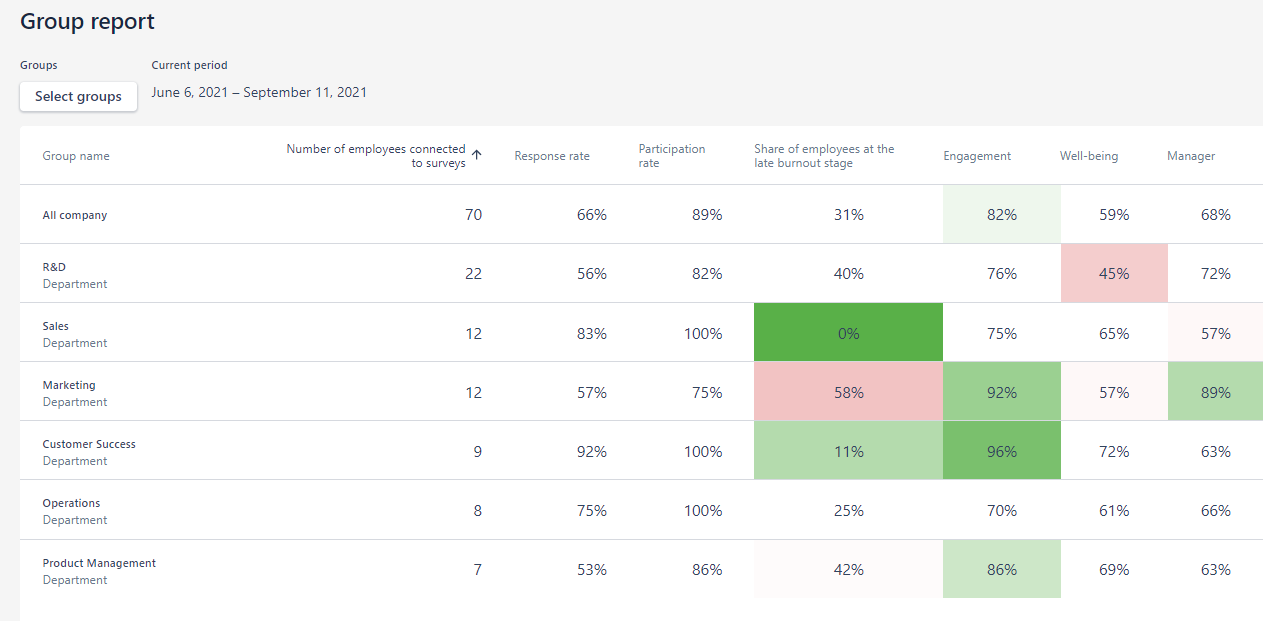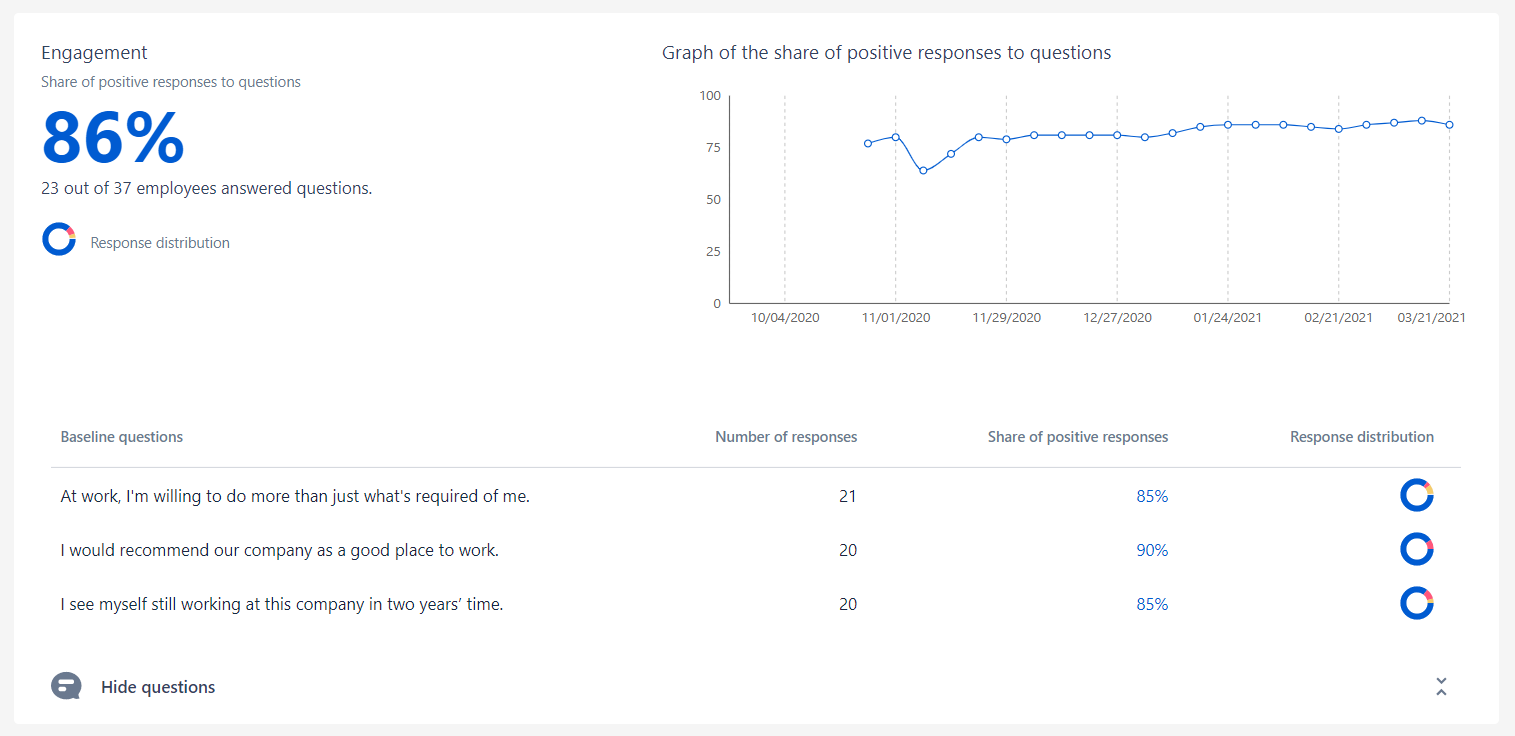Employee experience. Work at the company level
If you are the head of an organization or an HR manager, then, first of all, you are interested in the situation with engagement and burnout in general, and only then - in the detailed results by departments or other employee groups.
How to deal with engagement and burnout at the level of the whole company?
Analyze the situation for the company in general
Your main task is to consider the situation in the company in complex, take into consideration both the weak points of the company and those, which you can rely on.
Go to the “Group report” section, which reflects the situation with burnout and engagement in the whole company and in individual departments.
Pay attention to:
What share of employees are at a late stage of burnout across the company? Does this figure meet your expectations or contradict them?
What is the engagement level across the company? In your opinion, is it high enough or is it worth working on? For benchmarks on engagement and drivers, see the Employee experience. Results interpretation article.
How is satisfaction with different engagement drivers distributed across the company as a whole? Which drivers are employees most satisfied with? What are they less satisfied with? Take note of these drivers.
How is satisfaction with the drivers by departments demonstrated? Are there any departments where the indicators differ significantly from the indicators for the company? If so, then you should pay special attention to such departments.
Read more in the Employee experience. Work at the group level article.

Analyze the situation in the company in a more detailed way
You can get more detailed statistics by clicking on the line with indicators for the company.

Pay attention to:
Burnout dynamics for the company as a whole. During what periods did the number of employees with early or late burnout symptoms increase? When did it decrease? What events in the company could influence this? For example, employee burnout can be affected by a change in the company's organizational structure or the remuneration principles. Please remember that burnout is a consequence of accumulated stress or dissatisfaction, that is, 1-2 months can pass between the event that triggered the burnout process and the actual burnout.
Did the employees manage to "recover" from such events? Has the share of employees with burnout signs returned to their normal condition? Was this recovery related to a change of team or was this a recovery of existing employees? After which events was the slowest decreasing share of employees with burnout signs in your company? Were there any events after which employees were unable to fully recover? Take a note of such events.
What is the share of employees with early or late burnout signs in the company? Is it more or less than this indicator during the observed period? If more, think about what events in the company could affect this? Put down these events.
What is the driver satisfaction dynamics that you noted for yourself? Is there a connection between these drivers satisfaction dynamics and the share of burned out employees? Analyze employee responses about the drivers that employees are least satisfied with. Think about what this situation could be connected with? If necessary, highlight the department whose employees are the least satisfied with a particular driver, and discuss with them at an informal meeting what exactly is causing the dissatisfaction. Put down these reasons.

Develop a plan and take action!
Once you have identified the reasons that provoke employee burnout, you need to:
Analyze whether the current situation is related to any recent events that have occurred in the company or to the situation in the company as a whole? Can the problem be solved by additional information provison to employees on any topic, or do you need serious changes in company policies?
Think about what exactly you can do to fix the situation. Can you fix it at the HR level, or is it necessary to involve senior management or line managers? Make a list of all the employees you will need to fix the situation.
Think over what actions will be required from you, what - from other participants? What resources will be required to fix the situation? Fix the results. For recommendations on how to work with individual engagement drivers, see the Employee experience. Leveraging drivers article.